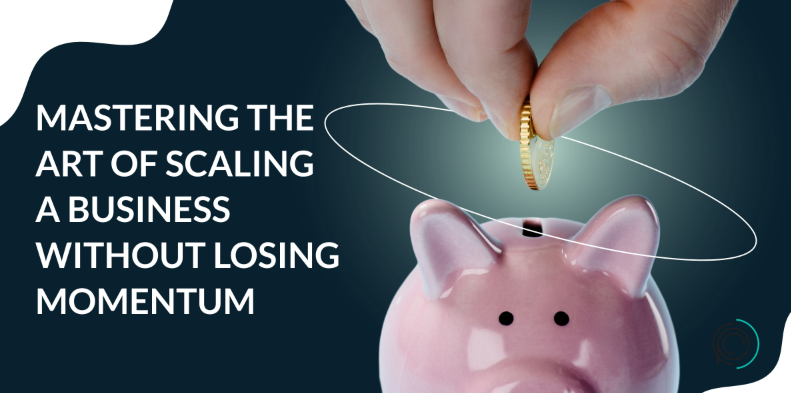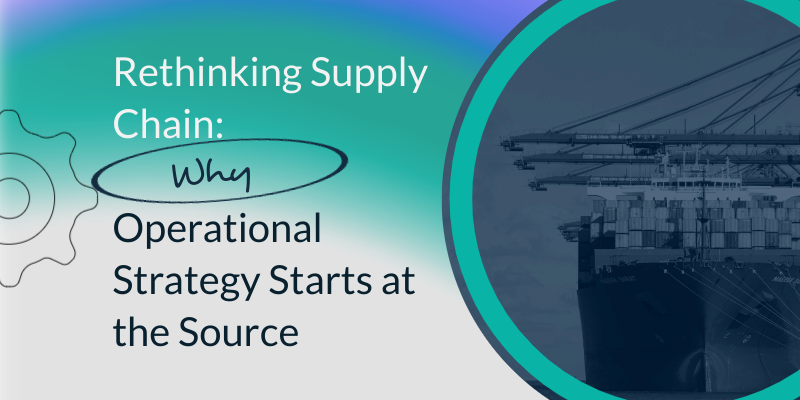Beyond the Assembly Manual: Navigating the Complexities of Business Success
Everyone seems to have a soft spot for Ikea — it’s not only affordable and convenient, but its flat-pack furniture also offers the simple joy of assembly, provided you follow the instructions to a tee. In many ways, wouldn’t it be wonderful if running a company was just as straightforward? However, while the myriad of “how-to” books and online courses might suggest it’s possible to find a one-size-fits-all solution to business success, the reality is far more complex. There isn’t a universal guidebook that guarantees success in the business world.
Let’s delve deeper into why the process of running a business and assembling Ikea furniture are fundamentally different challenges. We’ll also explore strategies for steering your company toward success, even when there’s no manual to rely on.
Assembling Ikea furniture is a task with a clear beginning, middle, and end. You have a set of instructions, and if you follow them correctly, you’ll end up with a tangible product. Running a business, on the other hand, is an ongoing process that involves navigating unpredictable market changes, managing people with diverse needs and skills, and constantly adapting to new technologies and consumer trends.
Moreover, while Ikea thoughtfully provides all the essential parts and specialized tools required for assembly, the process of running a business is markedly different. In the business world, leaders are tasked with the challenge of sourcing their own “parts” and “tools.” This can include the arduous tasks of finding the right employees who not only have the skills but also fit the company culture, choosing the most effective marketing strategies that align with their brand and reach their target audience, or securing financing from reliable sources that believe in the business’s vision.
Despite these apparent differences, there are strategies to tackle the complexity of managing a business with the same confidence one might possess when assembling a piece of flat-pack furniture. This approach involves being fully prepared to learn from both successes and failures, and adapt as necessary. It requires a deep understanding of the industry to navigate its challenges and leverage opportunities effectively. Cultivating a strong and positive company culture is another cornerstone, as it fosters an environment where employees are engaged and motivated. Additionally, successful business leaders always keep the needs and desires of their customers at the forefront of their strategy, ensuring that their offerings remain relevant and sought after in a competitive market. By adopting these strategies, entrepreneurs can navigate the intricacies of business with assurance and agility.
Recognizing that there’s no universal playbook for achieving business success is crucial. Understanding this, while still being willing to tackle the complexities and hurdles head-on, lays the foundation for building a robust and resilient company. Similar to assembling a piece of Ikea furniture, where the process may involve interpreting confusing instructions and managing numerous small parts, the real satisfaction comes from witnessing your vision materialize, bit by bit. It’s about taking those initial steps, guided by strategic planning and fueled by perseverance, and gradually seeing your entity grow and flourish into something tangible and successful.
The problem with Ikea
At the heart of the issues with Ikea lies a fundamental flaw: the principle of blanket implementation. When you purchase an Ikea table, you’re provided with an instruction booklet featuring a few diagrams and some straightforward instructions. Remarkably, this same booklet is designed to be universally applicable across thousands of iterations of that same furniture set, allowing for no variation and disregarding any unique factors that might arise.
This one-size-fits-all approach might work for assembling furniture, but it falls short when applied to running a business. The complexity of business operations cannot be understated. You can’t simply follow a manual titled “how to run a business” and expect all the guidelines to fit your specific situation perfectly. Even if another company operates in the same sector, targets a similar audience, and offers a comparable product or service, it doesn’t mean that adopting an identical strategy will yield success.
Businesses are incredibly diverse entities, each characterized by its own set of core values, distinctive culture (as highlighted by the nuances in their “corporate cultural fingerprint”), technological infrastructure, leadership style, and strategic direction, among other unique attributes. These differences necessitate a tailored approach to business strategy and management.
The challenge, then, is figuring out how to adapt broad principles to fit the unique needs and circumstances of your business. This involves a deep understanding of your own company’s identity, strengths, weaknesses, and market position. It also requires a willingness to learn from general advice and best practices but adapt them in innovative ways that align with your company’s specific goals and values.
In essence, while Ikea’s instructions offer a simple, streamlined process for furniture assembly, the complexities of running a business demand a more nuanced, customized approach. Recognizing and embracing the unique aspects of your business is key to developing effective strategies that lead to sustainable success.
The Alternative Approach
While there may not exist a one-size-fits-all manual for running a business with utmost efficiency, this absence doesn’t imply that achieving success is out of reach. It merely suggests that a more nuanced and thoughtful approach is required, one that takes into consideration the unique characteristics of your company and the development of tailored processes that align with these distinctions.
Most companies operate with some form of mission statement as their guiding star. However, it’s not uncommon for these declarations to become outdated or misaligned with the company’s current trajectory and ethos. An excellent first step towards realigning your business practices with your core values involves revisiting your mission statement with your team. During this review, engage in open discussions: Does the current mission statement accurately mirror the essence of your business as it stands today? Are there elements or values that once felt central but now seem absent or underrepresented? Perhaps there are ideals you aspire to embody but have found challenging to integrate into your business’s daily operations. This reflective exercise can serve as a valuable foundation for identifying the unique elements that set your company apart from the rest.
Understanding what makes your company distinctive is just the beginning. The next phase involves a deep dive into the operational aspects of your business. The goal here is to ensure that your processes don’t just exist for the sake of it but truly resonate with and reinforce your company’s mission. This alignment is crucial; without it, the mission statement risks becoming nothing more than a decorative plaque on the wall. Achieving this congruence between mission and methodology is no small feat. It requires a continuous commitment to evaluation and adaptation, keen observation of how each operational element contributes to (or detracts from) the mission, and a willingness to make sometimes difficult adjustments to ensure that your business remains true to its core objectives.
In essence, crafting a business that is both effective and true to its unique vision involves a blend of introspection, strategic planning, and operational alignment. By committing to this holistic approach, you not only honor the foundational principles of your company but also position it for meaningful and sustained success.
There are four key aspects to pay attention to:
- People. What leadership style is predominantly practiced in your organization? How would you describe the ethos and atmosphere of your company culture? Are your employees genuinely engaged and demonstrably productive in their roles? It’s crucial to consider how engagement levels directly impact productivity and overall company morale. Exploring methods to enhance employee engagement can be transformative.
- Processes. In what manner are the day-to-day operations and tasks executed within your business? This encompasses all areas, ranging from logistics and supply chain management to sales strategies and marketing efforts. Evaluating and optimizing these processes can lead to significant improvements in efficiency and effectiveness.
- Technology. To what extent is your organization utilizing current technology and software solutions to achieve its objectives? Are there opportunities to modernize your approach and adopt digital transformation strategies to stay competitive and meet the evolving needs of the market?
- Customer service. Consider the level of service provided to your customers. How does your company interact with its clients, and is the quality of your customer service meeting, if not exceeding your expectations? Identifying areas for improvement in customer service can lead to higher satisfaction rates and foster loyalty among your consumer base.
Understanding what is happening in these areas and how to optimize them is key to change management. However, there’s rarely a simple solution.
How a Consultancy Can Elevate Your Business
The unique nature of each company underscores the critical importance of partnering with qualified professionals during times of transformation. A proficient consultancy recognizes the distinct values, missions, and strategies inherent to every organization. This understanding allows them to tailor their approaches to enhance operations effectively, rather than applying a one-size-fits-all solution to diverse client needs.
Such firms should prioritize collaboration, inviting you into the process and presenting a spectrum of strategies to ensure your decisions are informed, rather than coerced. The essence of engaging a consultancy lies not in relinquishing control or conforming to a predefined mold but in acquiring an external perspective. This fresh viewpoint can illuminate overlooked vulnerabilities and unrealized potential within your operations.
Moreover, a truly beneficial consultancy goes beyond mere advice, actively engaging in understanding your business culture, customers, and market position. This comprehensive approach enables them to identify opportunities for growth and efficiency improvements that are aligned with your long-term objectives. By working closely with you, they can help navigate the complexities of change management, ensuring that the transformation process is not only smooth but also sustainable.
In essence, the right consultancy acts as an extension of your team, bringing expertise, insight, and impartiality to help steer your company towards its goals. Whether it’s through optimizing current processes, introducing innovative solutions, or uncovering new growth avenues, their contribution can be invaluable in achieving long-term success and staying competitive in a rapidly changing marketplace.
Leave Ikea for your house
This insightful article is not an attempt to discredit Ikea — after all, their furniture occupies a unique spot in the market, and it’s undeniable that the retailer’s millions of loyal customers find value in what they offer. However, it’s essential to recognize that no two companies operate under the exact same circumstances, thus adopting a cookie-cutter approach is far from ideal.
At Cornerstone Paradigm Consulting, our core belief is the significance of preserving and celebrating what makes each business distinct. Unlike methods that might dilute a company’s unique charm, we focus on leveraging these special qualities to their fullest potential. Through our tailored approach, we aim to not only respect but amplify what sets your business apart.
Understanding the importance of differentiation in today’s competitive landscape, we are committed to providing strategies that are as unique as your company. By recognizing and harnessing your business’s individual strengths, we help pave the path to success that feels authentic and sustainable.
To explore how our specialized services can benefit your company and help it stand out in a crowded market, we invite you to reach out. Contact us to book a comprehensive consultation today and start on the journey of transforming your business with a strategy that celebrates its uniqueness.







